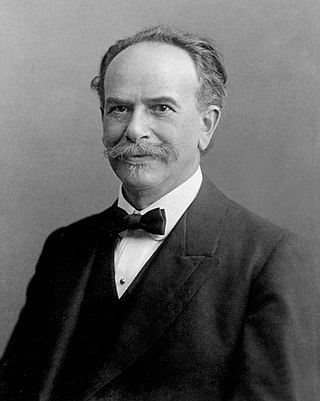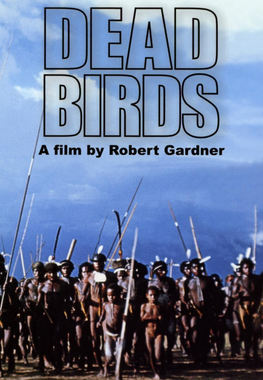
Anthropology is the scientific study of humanity, concerned with human behavior, human biology, cultures, societies, and linguistics, in both the present and past, including past human species. Social anthropology studies patterns of behavior, while cultural anthropology studies cultural meaning, including norms and values. A portmanteau term sociocultural anthropology is commonly used today. Linguistic anthropology studies how language influences social life. Biological or physical anthropology studies the biological development of humans.

Franz Uri Boas was a German-American anthropologist and a pioneer of modern anthropology who has been called the "Father of American Anthropology". His work is associated with the movements known as historical particularism and cultural relativism.

Dead Birds is a 1963 American documentary film by Robert Gardner (1925–2014) about the ritual warfare cycle of the Dugum Dani people who live in the Baliem Valley in present-day Highland Papua province on the western half of the island of New Guinea in Indonesia. The film presents footage of battles between the Willihiman-Wallalua clan and the Wittaia clan with scenes of the funeral of a small boy killed by a raiding party, the women's work that goes on while battles continue, and the wait for enemy to appear. In 1964 the film received the Grand Prize "Marzocco d'Oro" at the 5th Festival dei Popoli rassegna internazionale del film etnografico e sociologico in Florence, Italy, the Robert J. Flaherty Award given by the City College of New York, and was a featured film at the Melbourne Film Festival. In 1998, Dead Birds was included in the annual selection of 25 motion pictures added to the National Film Registry of the Library of Congress. being deemed "culturally, historically, or aesthetically significant" and recommended for preservation. Dead Birds has come to hold canonical status among ethnographic films.

Gregory Bateson was an English anthropologist, social scientist, linguist, visual anthropologist, semiotician, and cyberneticist whose work intersected that of many other fields. His writings include Steps to an Ecology of Mind (1972) and Mind and Nature (1979).
Linguistic anthropology is the interdisciplinary study of how language influences social life. It is a branch of anthropology that originated from the endeavor to document endangered languages and has grown over the past century to encompass most aspects of language structure and use.

Sir Edward Burnett Tylor was an English anthropologist, and professor of anthropology.
Anthropological linguistics is the subfield of linguistics and anthropology which deals with the place of language in its wider social and cultural context, and its role in making and maintaining cultural practices and societal structures. While many linguists believe that a true field of anthropological linguistics is nonexistent, preferring the term linguistic anthropology to cover this subfield, many others regard the two as interchangeable.
George Peter ("Pete") Murdock, also known as G. P. Murdock, was an American anthropologist who was professor at Yale University and University of Pittsburgh. He is remembered for his empirical approach to ethnological studies and his study of family and kinship structures across differing cultures. His 1967 Ethnographic Atlas dataset on more than 1,200 pre-industrial societies is influential and frequently used in social science research.

Visual anthropology is a subfield of social anthropology that is concerned, in part, with the study and production of ethnographic photography, film and, since the mid-1990s, new media. More recently it has been used by historians of science and visual culture. Although sometimes wrongly conflated with ethnographic film, visual anthropology encompasses much more, including the anthropological study of all visual representations such as dance and other kinds of performance, museums and archiving, all visual arts, and the production and reception of mass media. Histories and analyses of representations from many cultures are part of visual anthropology: research topics include sandpaintings, tattoos, sculptures and reliefs, cave paintings, scrimshaw, jewelry, hieroglyphics, paintings and photographs. Also within the province of the subfield are studies of human vision, properties of media, the relationship of visual form and function, and applied, collaborative uses of visual representations.

Morris Edward Opler, American anthropologist and advocate of Japanese American civil rights, was born in Buffalo, New York. He was the brother of Marvin Opler, an anthropologist and social psychiatrist.
The Rashomon effect is a storytelling and writing method in cinema in which an event is given contradictory interpretations or descriptions by the individuals involved, thereby providing different perspectives and points of view of the same incident. The term, derived from the 1950 Japanese film Rashomon, is used to describe the phenomenon of the unreliability of eyewitnesses.
Ethnoecology is the scientific study of how different groups of people living in different locations understand the ecosystems around them, and their relationships with surrounding environments.
Leon Eugene Stover was an anthropologist, a Sinologist, and a science fiction fan, who wrote both fiction and nonfiction. He was a scholar of the works of H. G. Wells and Robert A. Heinlein and an occasional collaborator with Harry Harrison.
Identity tourism may refer to the act of assuming a racial, ethnic, socioeconomic, sexual or gender identity for recreational purposes, or the construction of cultural identities and re-examination of one’s ethnic and cultural heritage from what tourism offers its patrons.

An ethnographic film is a non-fiction film, often similar to a documentary film, historically shot by Western filmmakers and dealing with non-Western people, and sometimes associated with anthropology. Definitions of the term are not definitive. Some academics claim it is more documentary, less anthropology, while others think it rests somewhere between the fields of anthropology and documentary films.
Karl Heider is an American visual anthropologist.

Culture is an umbrella term which encompasses the social behavior, institutions, and norms found in human societies, as well as the knowledge, beliefs, arts, laws, customs, capabilities, and habits of the individuals in these groups. Culture is often originated from or attributed to a specific region or location.

Woman, Culture, and Society, first published in 1974, is a book consisting of 16 papers contributed by female authors and an introduction by the editors Michelle Zimbalist Rosaldo and Louise Lamphere. On the heels of the 1960s feminist movement, this book challenged anthropology's status quo of viewing studied cultures from a male perspective while diminishing female perspectives, even considering women as comparatively imperceptible. It is considered to be a pioneering work.

David MacDougall is an American-Australian visual anthropologist, academic, and documentary filmmaker, who is known for his ethnographic film work in Africa, Australia, Europe and India. For much of his career he co-produced and co-directed films with his wife, fellow filmmaker Judith MacDougall. In 1972, his first film, To Live with Herds was awarded the Grand Prix "Venezia Genti" at the Venice Film Festival. He has lived in Australia since 1975, and is currently a professor in the Research School of Humanities & the Arts at Australian National University.
Barbara Helen Tedlock is an American cultural anthropologist and oneirologist. She is Distinguished Professor of Anthropology at the State University of New York, Buffalo. Her work explores cross-cultural understanding and communication of dreams, ethnomedicine, and aesthetics and focuses on the indigenous Zuni of the Southwestern United States and the Kʼicheʼ Maya of Mesoamerica. Through her study and practice of the healing traditions of the Kʼicheʼ Maya of Guatemala, Tedlock became initiated into shamanism. She is the collaborator and wife of the late anthropologist and poet Dennis Tedlock.










